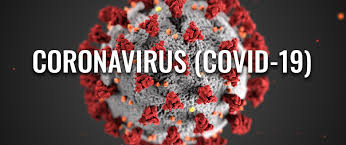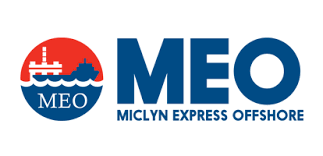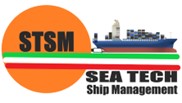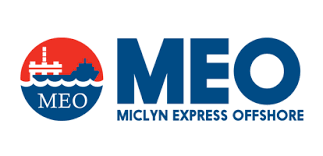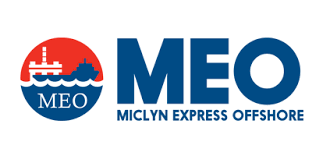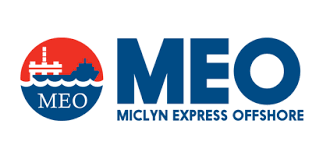Title Page
-
Appointed SMO name
-
Designation
-
Date and time of inspection
Instructions
-
1. DO NOT add audit actions on iAuditor. Raise MNCs, NCs, Obs directly on the INTRANET'S ATR.
-
2. For proper documentation of audits, extract the final report from iAuditor and save it in the document library together with other audit documents.
Requirements
A. Take care of your workers
-
1.Ensure that all employees who are able to work from home do so.
-
MOM Evidence - Refer to 4.1 & 5.1
-
2. Conduct all meetings between employees and with suppliers/contractors virtually where possible.
-
3. Enable vulnerable employees (i.e. Including persons who are aged 60 and above, and patients who are immunocompromised (have a compromised or impaired immune system). Please refer to https://www.moh.gov.sg/docs/librariesprovider5/advisories/advisory-on-vulnerable-group-(moh).pdf for more information.) to work from home, including temporarily redeploying them to another role within the company that is suitable for working from home, as far as possible.
-
4. Stagger working and break hours to reduce possible congregation of employees at all common spaces (i.e. Including entrances, exits, lobbies, canteens and pantries). <br>Encourage staggered start times for all employees such that at least half of all employees start work in the workplace after 10am, as far as possible. If physical meetings are needed, encourage them to be scheduled after 10 am.<br>Encourage flexible workplace hours for employees who can work-from-home but return to the workplace. <br>Timings of lunch and other breaks must also be staggered.<br>Reporting and ending times does not coincide with peak-hour travel where possible.<br>If working and break hours cannot be staggered due to operational reasons, other systems must be implemented to reduce congregation of employees at common spaces.<br>
-
MOM Evidence - Refer to 4.1 & 5.1
-
5. No cross-deployment/interaction between employees in different worksites (If cross-deployment/interaction cannot be avoided due to operational reasons, safe distancing measures must be implemented and observed).
-
MOM Evidence - Refer to 4.1 & 5.1
-
4.1 & 5.1 MOM Evidence (Instructions 1, 5 & 6) - <br>Provide list of all employees in an Excel spreadsheet with<br>the following details: a. Full name<br>b. NRIC/FIN <br>c. Work arrangements (“not working”,<br>“work-from-home”, “onsite (shift work)”<br>or “onsite (non-shift work)”)<br>d. Shift number for arrival/departure at<br>workplace and break hours (if applicable)<br>e. Team number (if applicable – see no. 6)<br>
-
6. All work-related events (i.e. events not organised primarily for social interaction. Work-related events that are allowed to proceed are those which primarily involve employees or stakeholders, such as conferences / seminars, corporate retreats, staff training sessions, Annual General Meetings and Extraordinary General Meetings) that proceed must adhere to prevailing workplace Safe Management Measures and are subjected to the following requirements (This is separate and distinct from the piloting of MICE events of up to 250 attendees announced by the Singapore Tourism Board (STB) on 7 September 2020):<br>a. The number of persons per event must be capped at 50 persons to limit the risk of exposure to infection.<br>b. Attendees must maintain at least 1 metre safe distancing between individual attendees, as per the requirement at the workplace. <br>c. Meals should not be the main feature of the event. Employers should also avoid holding events over mealtimes as far as possible. Food or drinks should only be served if incidental to the workplace event (e.g. the meeting or conference extends over lunchtime). In addition, the food must be served individually with the participants seated while consuming. Participants should minimise the time that they are unmasked while eating.<br>Work-related events at third-party venues(6) will also be subject to any additional premise owners’ safe management policies.
-
7. Allow only up to a total gathering size of 5 people for social and recreational gatherings e.g. team-bonding events and farewell lunches organised by the employers, within or outside the workplace.<br>Ensure employees adhere to the permissible gathering size of 5 persons(7 - Including common spaces such as staff canteens, pantries, water coolers/vending machines, smoking corners, etc.), including during meals or breaks.
-
7.1 MOM Evidence - Show signs and instructions at common spaces in the workplace that social gatherings or socialisation/congregation in groups of more than 5 are not allowed.
-
8. Require all onsite personnel, including employees, visitors and vendors, to wear masks and other necessary personal protective equipment at all times, except during activities that require masks to be removed (e.g. mealtimes). <br>Ensure that all employees have sufficient masks, including any need to replace masks due to workplace conditions (e.g. humidity). Where possible, employers should consider improving the working environment for employees to enable them to sustain wearing the masks.
-
8.1 MOM Evidence - If disposable masks (e.g. N95, surgical masks) are used, show how many new masks each employee is issued with daily.
B. Take care of the workplace
-
9. Limit workplace access to only essential employees and authorised visitors.<br>Use SafeEntry visitor management system to log the entry of all personnel (including employees<br>and visitors) entering the workplace. For the list of workplaces where SafeEntry must be deployed,<br>refer to https://www.safeentry.gov.sg/deployment.<br>Personnel who are unwell must be refused entry to the workplace.
-
9.1 MOM Evidence - <br>Show how workplace access is limited only to essential employees and authorised visitors.<br>Show signs and instructions that unwell personnel are refused entry to the workplace.
-
10. Employees and visitors must declare via SafeEntry or other means (e.g. electronic or hard copy<br>records), before being allowed to enter premises, that they:<br>a. Are currently not under a Quarantine Order, Stay-Home Notice;<br>b. Have not had close contact with a confirmed COVID-19 case in the past 14 days; and<br>c. Do not have any fever or flu-like symptoms.<br>To make declarations via SafeEntry with NRIC, employers must display prominent signs informing<br>all visitors and employees that they are making the required declarations by checking in via<br>SafeEntry.
-
10.1 MOM Evidence - For SafeEntry with NRIC, show signs informing visitors and employees of the declarations being made by checking in.<br>
-
11. Require all employees to keep a clear physical spacing of at least 1 metre between persons at all<br>times.<br>Demarcate such distances at the workplace premises with visual indicators or through physical<br>means6<br>, including but not limited to entrances, exits, workstations, lifts, pantries, canteens,<br>meeting rooms/areas, vehicles/company transport.<br>If there is a critical need for physical meetings, limit number of attendees and shorten their<br>durations.<br>
-
11.1 MOM Evidence - Show how safe distancing is carried out at<br>workstations, and other common areas where congregation of workers may occur.
-
12. Require suppliers/contractors to implement similar safe distancing measures while onsite, so that operations and business interactions with them are kept safe.<br>Schedule deliveries and other physical interactions in a staggered manner and keep durations as short as possible.
-
12.1 MOM Evidence - Show signs and instructions that suppliers /<br>contractors are required to implement safe distancing measures
-
13. Minimise need for common physical touchpoints (e.g. by deploying contactless access controls) where possible.
-
13.1 MOM Evidence - Show how physical touchpoints have been minimised or precautions have been taken to minimise risk at these touchpoints.
-
14. Regularly clean and maintain common spaces and equipment, particularly during shift or split team changeovers.<br>Adhere to sanitation and hygiene advisories disseminated by the National Environmental Agency.
-
14.1 MOM Evidence - Show cleaning schedules and any other relevant<br>instructions to/documents from cleaning service provider.
-
15. Provide:<br>a. Cleaning agents (e.g. hand soap, toilet paper) at all toilet and hand-wash stations;<br>b. Disinfecting agents (e.g. hand sanitisers) at all human traffic stoppage points within the workplace, such as entrances, reception areas, security booths and lift lobbies.<br>c. Disinfecting agents (e.g. disinfectant sprays, paper towels and wipes) at meeting rooms and other common spaces such as pantries or canteens.
C. Take care of workers who become unwell at the workplace
-
16. Ensure regular checks for temperature and respiratory symptoms for all employees and visitors, twice daily or where relevant.
-
16.1 MOM Evidence - Show arrangements for checks on temperature and respiratory symptoms, such as facilities set up to screen all employees and visitors or records of temperature checks.
-
17. Encourage all employees at the workplace to download and activate the TraceTogether app.
-
18. Actively monitor unwell employees and guard against incipient outbreaks.
-
a. Require workplace employees to submit records of their MCs and diagnoses provided (only for COVID-19-related symptoms - Including but not limited to typical symptoms such as fever, cough and shortness of breath), including acute respiratory infections), and if they were tested for COVID-19 and the results of their tests.
-
b. Take preventive actions to guard against incipient outbreaks at the workplace, such as requiring these employees on MCs to closely monitor their health before returning to the workplace and requiring these employees’ close contacts at the workplace to monitor their health more regularly.
-
c. Where possible, ensure that each workplace employee visits only one clinic for check-ups. Otherwise, employees must inform the clinic of all recent doctor visits over past 14 days for any symptoms that may be related to COVID-19.
-
18.1 MOM Evidence - Show records of communication to all workplace employees. Show records of COVID-19-related conditions, MCs and test results reported by employees.
-
19. Put in place an evacuation plan for suspected cases, as well as for all other onsite personnel.
-
a. Any employee who is feeling unwell or showing symptoms of illness should report to his employer, leave the workplace and consult a doctor immediately, even if symptoms may appear mild. Employers must track and record these cases as part of Safe Management measures.
-
b. For incapacitated or unconscious individuals – clear the area of other personnel and administer aid immediately. Employers should call 995 for an emergency ambulance to ferry them to the nearest hospital.
-
19.1 MOM Evidence - Show evacuation plan.
-
20. Put in place a follow-up plan in the event of a confirmed case:
-
a. Immediately vacate and cordon-off the immediate section of the workplace premises where the confirmed case worked. There is no need to vacate the building or the whole floor if there is no sustained and close contact with the confirmed case;
-
b. Carry out a thorough cleaning and disinfect all relevant on-site areas and assets exposed to confirmed cases, in accordance to NEA guidelines.
-
Note: For workplaces with confirmed cases, businesses could be suspended if there are public health grounds to do so.
-
20.1 MOM Evidence - Show follow-up plan.
D. Implement a system of Safe Management Measures at workplaces
-
21. Establish and implement a system of Safe Management Measures to provide a safe working environment and minimise risks of further outbreaks.<br>Implement these measures in a sustainable manner, for as long as necessary.
-
22. Implement a detailed monitoring plan to ensure compliance with Safe Management Measures and issues (e.g. remedy of non-compliance, risk mitigation) are resolved in a timely manner.
-
22.1 MOM Evidence - Provide monitoring plan for ensuring compliance<br>with Safe Management Measures.
-
23. Appoint Safe Management Officers (“SMO”) to assist in the implementation and coordination of the system of Safe Management Measures at the workplace. The duties of the SMO will include the following:
-
a. To coordinate implementation of Safe Management Measures, which includes identifying relevant risks, recommending and assisting in implementing measures to mitigate the risks, and communicating the measures to all personnel working in the workplace.
-
b. To conduct inspections and checks to ensure compliance at all times and to report and document any non-compliance found during the inspections.
-
c. To take immediate action to remedy any non-compliance found during the inspections and checks.
-
d. To keep records of inspections and checks conducted and corrective actions taken. The records shall be made available upon request by a Government inspector.
-
23.1 MOM Evidence - List, duties and detailed tasks of SMOs.<br>Show records of inspections, checks, and corrective actions.
Completion Acknowledgement
-
Auditor's signature
